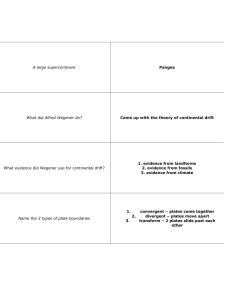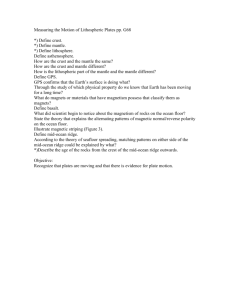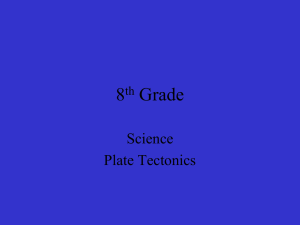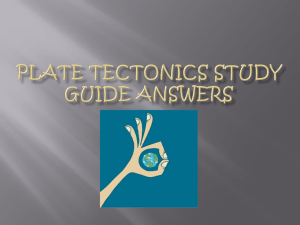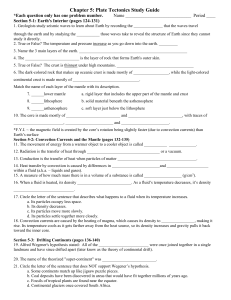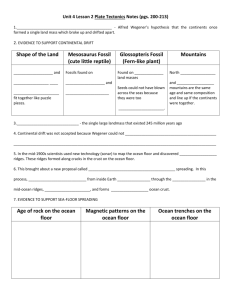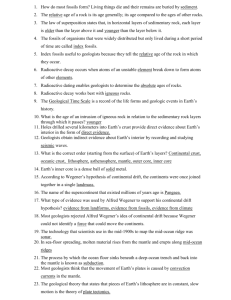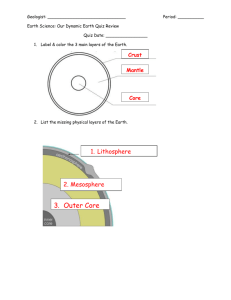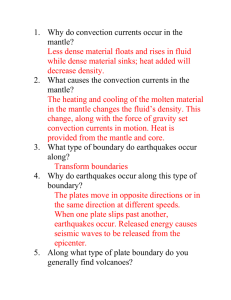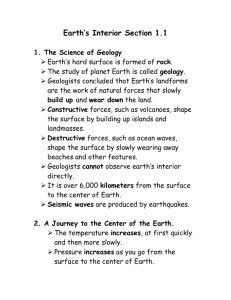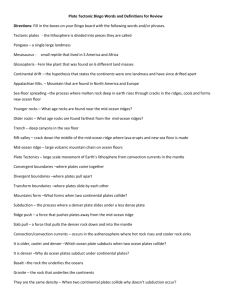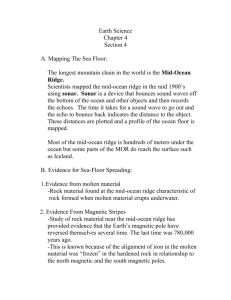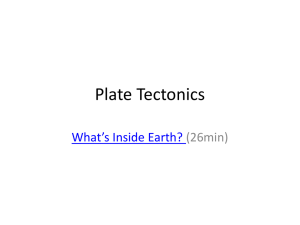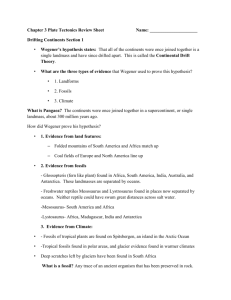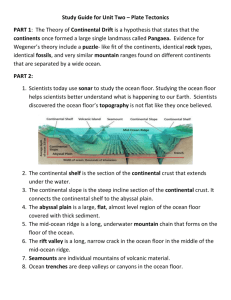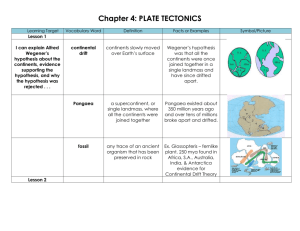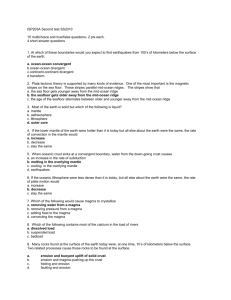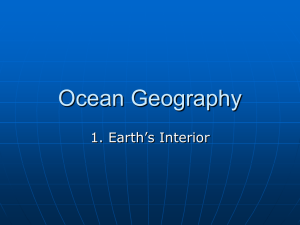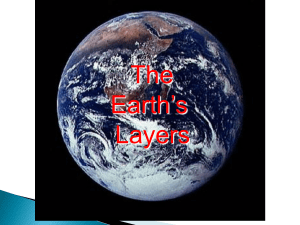Plate Tectonics
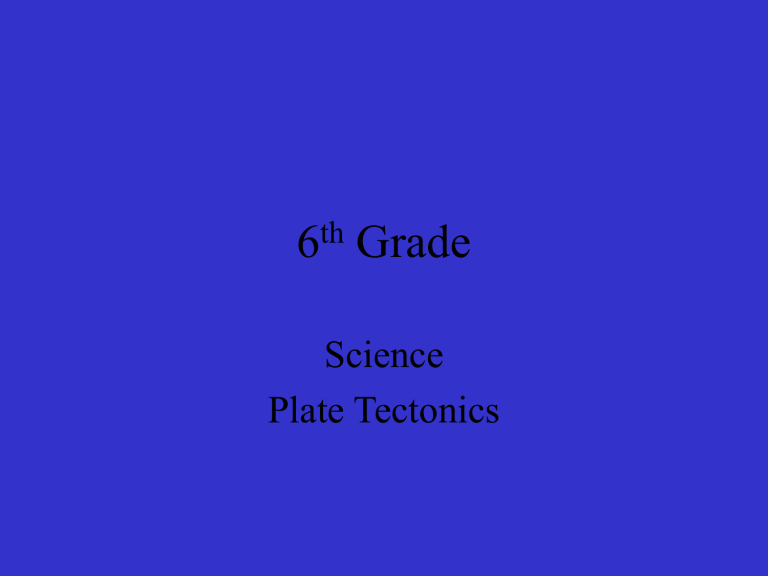
6 th Grade
Science
Plate Tectonics
Geologists are scientists who study the forces that make and shape the planet Earth.
Geologists study the Earth’s interior through seismic waves.
Geologists discovered the Earth has three layersthe crust, the mantle, and the core.
The oceanic crust beneath the ocean consists mostly of dense rock like basalt.
Continental crust consists of less dense rock like granite.
The upper mantle and crust make up the lithosphere.
The asthenosphere is a soft layer that can bend like plastic.
Heat is transferred in the mantle through radiation, conduction, and convection.
Radiation is the transfer of heat through empty space.
Conduction is heat transfer by direct contact of particles of matter.
Convection is heat transfer by the movement of heated liquid.
Alfred Wegener first proposed the theory of continental drift.
Continental drift is Wegener’s theory that all continents had once been joined together in a single landmass and have drifted apart since.
Wegener named this supercontinent Pangaea.
Wegener’s theory was rejected by scientists because he could not explain what force pushes or pulls continents.
Fossils of tropical plants found on an island in the Arctic Ocean are evidence for the theory of continental drift.
The mid-ocean ridge is the longest chain of mountains.
Most of the mountains in the mid-ocean ridge lie hidden under hundreds of meters of water.
Hess proposed that the ocean floors move, carrying the continents along with them. The movement begins at the mid-ocean ridge.
At the mid-ocean ridge, molten material rises from the mantle and erupts.
The process that continually adds new material to the ocean floor is called sea-floor spreading.
The ocean floor plunges into deep underwater canyons called deep-ocean trenches.
Subduction takes place in deep-ocean trenches.
Subduction is the process by which the ocean floor sinks beneath a deep-ocean trench and back into the mantle.
The lithosphere is broken into separate sections called plates.
The geological theory that states that pieces of Earth’s lithosphere are in constant, slow motion, driven by convection currents in the mantle is plate tectonics.
Faults are breaks in the Earth’s crust where rocks have slipped past each other.
The place where two plates move apart or diverge is called a divergent boundary.
A transform boundary is a place where two plates slip past each other, moving in opposite directions.
When a divergent boundary develops on land, two of Earth’s plates slide apart.
A deep valley called a rift valley forms along the divergent boundary.
A convergent boundary is where two plates come together, or converge. The result of the plates hitting together is called a collision.
